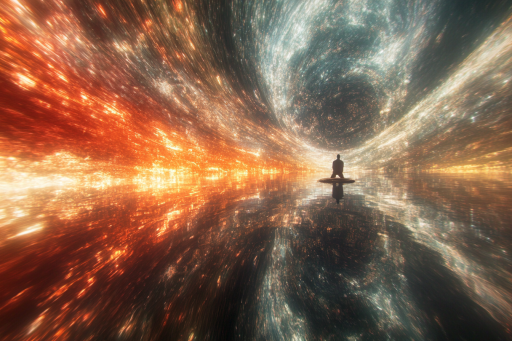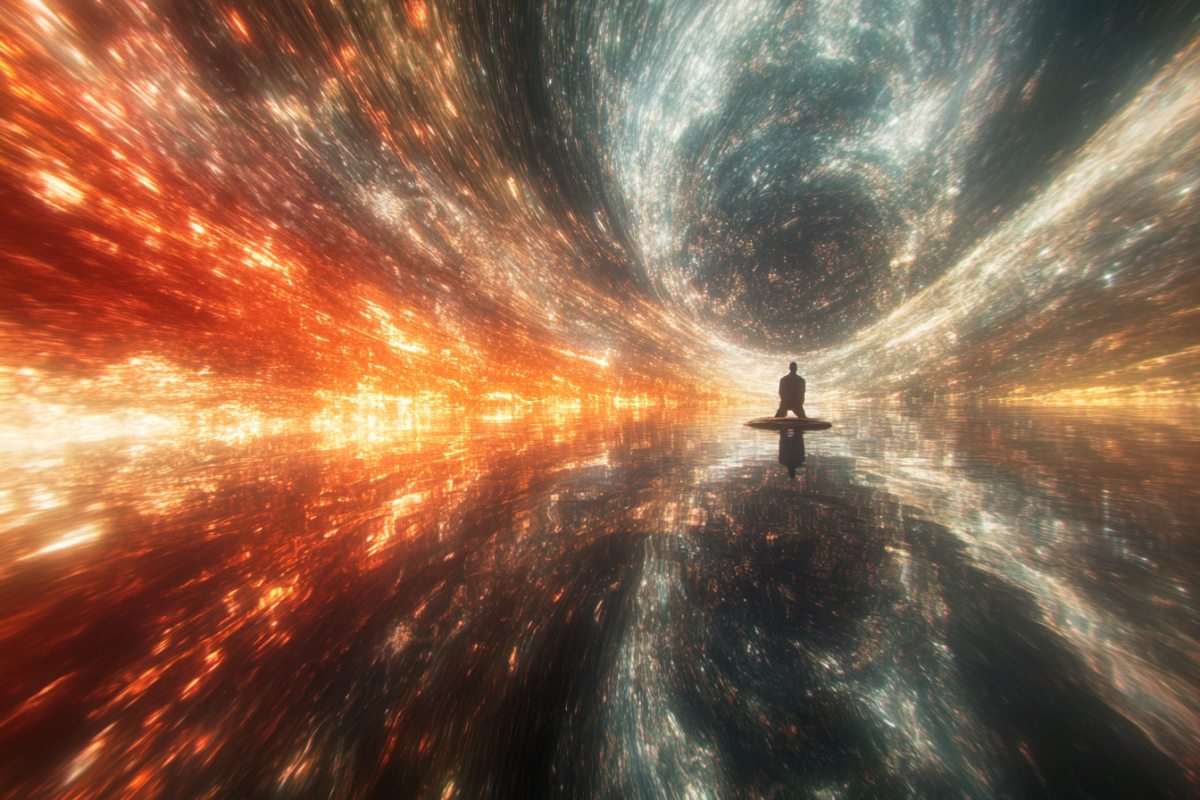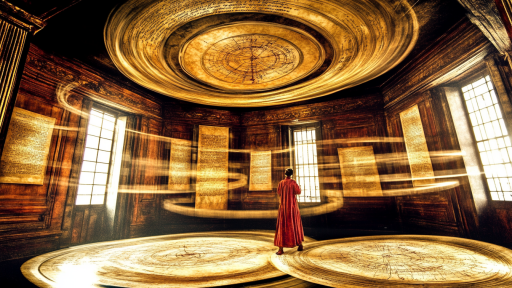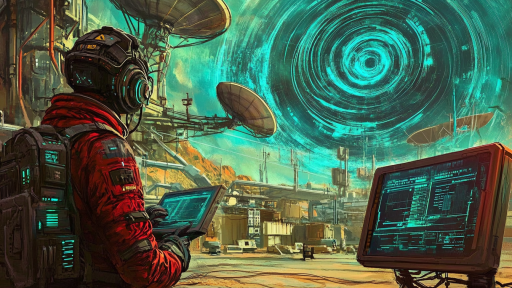
At the farthest reaches of the cosmos, astronomers have observed bizarre and unexplained phenomena that challenge the very fabric of physics. From galaxies moving in ways they shouldn’t to mysterious voids and strange cosmic radiation, the universe’s edges hold secrets that defy our understanding of space and time. These discoveries push the boundaries of what we know, raising profound questions about the origin, structure, and ultimate fate of the universe. Could these strange cosmic mysteries be clues to an even greater reality beyond what we can currently perceive?
The Cosmic Microwave Background Cold Spot – A Void Without Explanation

The Cosmic Microwave Background (CMB) Cold Spot is a vast, unexpectedly empty region of space, billions of light-years across, where the temperature is mysteriously lower than expected. Some scientists believe it could be a supervoid—a vast cosmic region nearly devoid of galaxies. Others have speculated it could be evidence of a parallel universe interacting with ours, a possibility that would shake the foundations of physics. Could this cold spot be a gateway to something beyond our understanding?
Dark Flow – A Mysterious Pull from Beyond the Observable Universe

Galaxies at the edge of the known universe are being pulled toward an unknown force, moving in a way that defies our understanding of cosmic expansion. This strange motion, known as Dark Flow, suggests the existence of a massive structure or gravitational source beyond the observable universe. Some theories propose it could be evidence of a hidden mega-structure or an unseen parallel universe influencing our own. What could be lurking beyond the cosmic horizon, pulling galaxies into the unknown?
The Hercules-Corona Borealis Great Wall – The Largest Known Structure in the Universe

Spanning 10 billion light-years, the Hercules-Corona Borealis Great Wall is the largest structure ever detected, defying the cosmological principle that matter should be evenly distributed on large scales. This enormous collection of galaxies challenges our understanding of how structures form and exist across cosmic time. Some astronomers even question whether our models of the universe can account for something of this size. Could this massive formation suggest a hidden pattern in the universe’s design?
Supermassive Black Holes Too Large for Their Age

At the furthest edges of the observable universe, astronomers have discovered supermassive black holes that shouldn’t exist. These giants formed too quickly after the Big Bang, defying our models of black hole growth. Scientists are now questioning whether we are missing a fundamental piece of physics about how these cosmic monsters grow. Did early black holes form in ways that modern science can’t yet explain?
The Eridanus Supervoid – A Vast Cosmic Desert

The Eridanus Supervoid is an immense empty region of space, nearly a billion light-years across, where galaxies seem to be missing. Unlike other voids, this one is too large to be explained by standard cosmic evolution models. Some have suggested it could be evidence of a collision with another universe, leaving behind a scar in the fabric of spacetime. Could this be the first visible trace of another cosmos interacting with our own?
Galaxies Moving in Synchronization – The Cosmic Dance

In multiple distant regions of the universe, entire galaxies have been observed rotating and moving in unexpected synchronization. This mysterious alignment defies our models of random cosmic distribution and suggests that hidden forces or structures may be guiding their motion. Some theories even suggest that dark matter or intergalactic magnetic fields might be playing a role. Could this be evidence of a deeper, unseen cosmic architecture?
Gamma-Ray Bursts from the Cosmic Edge – Energy Beyond Limits

Astronomers have detected mysteriously powerful gamma-ray bursts (GRBs) from the edge of the observable universe—some with more energy than physics can currently explain. These bursts are the most energetic events in the cosmos, yet their origin remains unknown. Some scientists speculate they could be signatures of dying stars, while others propose exotic new physics or even artificial beacons from advanced civilizations. Are these extreme energy bursts messages or natural cosmic explosions beyond our understanding?
The Giant Arc – A Structure That Shouldn’t Exist
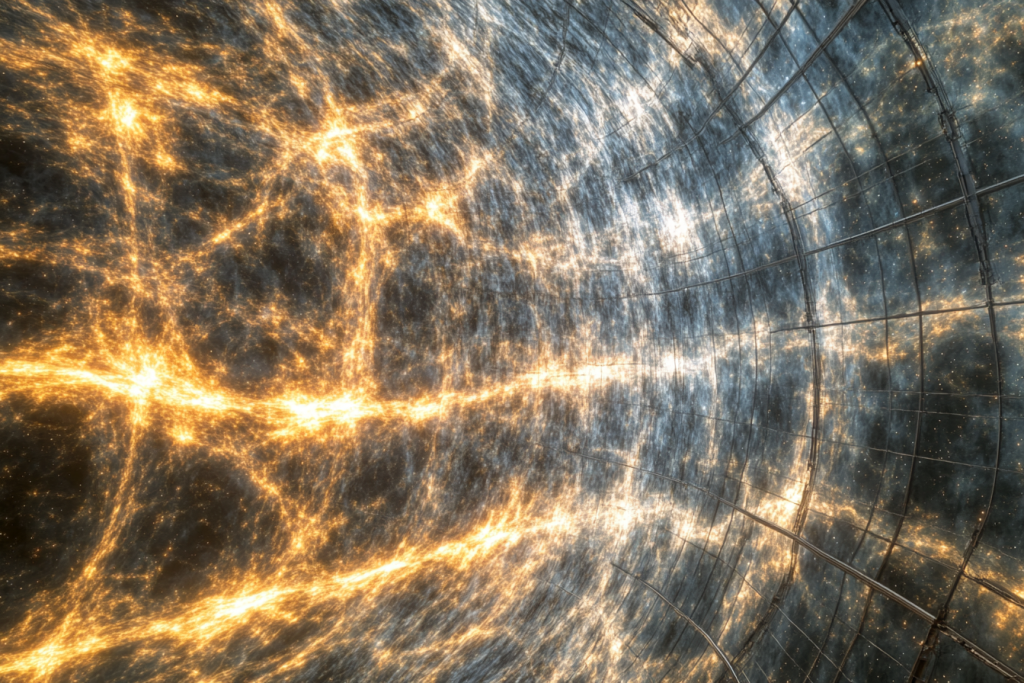
The Giant Arc, an arc-shaped structure spanning 3.3 billion light-years, was discovered in 2021 and violates existing cosmological theories. This formation challenges the idea that matter in the universe is evenly distributed on large scales. If confirmed, it could force astronomers to rewrite our understanding of large-scale cosmic structures. Could this be a sign of an unknown cosmic force shaping the universe in ways we never expected?
The Great Attractor – An Unseen Gravitational Force Pulling Our Galaxy

Our own Milky Way, along with thousands of other galaxies, is being pulled toward an unseen gravitational force called the Great Attractor. Hidden behind the dense mass of the Milky Way’s Zone of Avoidance, astronomers struggle to determine exactly what it is. Some speculate it is a massive supercluster or something even stranger—a gravitational anomaly hinting at physics beyond our understanding. What is dragging entire galaxies toward it?
Mysterious Cosmic Radio Circles – Giant Rings with No Known Source

Recently, astronomers discovered giant, unexplained radio circles in deep space, dubbed Odd Radio Circles (ORCs). These vast, glowing rings appear in radio wavelengths but have no visible counterpart in other spectrums. Their origin is completely unknown, with theories ranging from unknown astrophysical processes to potential signs of intergalactic communication. Could these mysterious radio signals be evidence of something we’ve never encountered before?
The Phantom Galaxy Clusters – Hidden Mass Beyond Detection

Astronomers have discovered entire galaxy clusters that appear to exist only in gravitational influence, but not in visible light. These so-called phantom clusters behave as if they contain massive amounts of matter, yet telescopes detect nothing but empty space. Some scientists believe this could be evidence of hidden dark matter structures, while others speculate that unknown cosmic phenomena are at play. Could these invisible clusters hint at an entirely new form of matter or physics we have yet to understand?
Are We Seeing the Edges of a Larger Reality?

The farther we look into space, the more questions arise about what lies beyond. These strange phenomena challenge our understanding of physics, time, and the very nature of the universe itself. Could the edges of the cosmos be hinting at something greater—perhaps another dimension, a hidden force, or even other universes? The deeper we explore, the closer we may come to discovering the true boundaries of reality.

